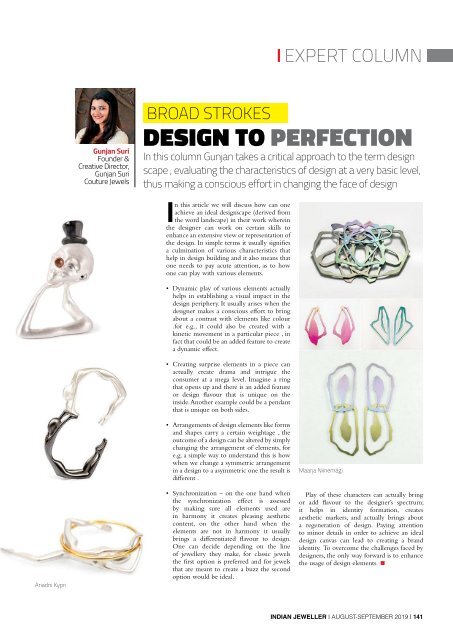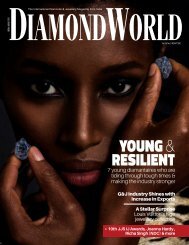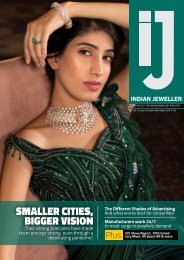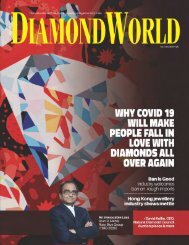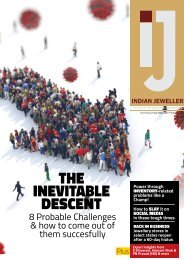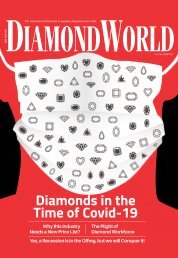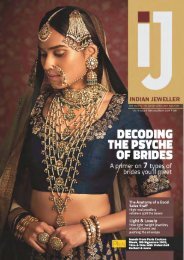Indian Jeweller (IJ) Magazine August -September 2019
Volume 10 | Issue 1 August September 2019
Volume 10 | Issue 1
August September 2019
You also want an ePaper? Increase the reach of your titles
YUMPU automatically turns print PDFs into web optimized ePapers that Google loves.
ExpErt column<br />
Gunjan Suri<br />
Founder &<br />
Creative Director,<br />
Gunjan Suri<br />
Couture Jewels<br />
BROAD STROKES<br />
Design to Perfection<br />
In this column Gunjan takes a critical approach to the term design<br />
scape , evaluating the characteristics of design at a very basic level,<br />
thus making a conscious effort in changing the face of design<br />
In this article we will discuss how can one<br />
achieve an ideal designscape (derived from<br />
the word landscape) in their work wherein<br />
the designer can work on certain skills to<br />
enhance an extensive view or representation of<br />
the design. In simple terms it usually signifies<br />
a culmination of various characteristics that<br />
help in design building and it also means that<br />
one needs to pay acute attention, as to how<br />
one can play with various elements.<br />
• Dynamic play of various elements actually<br />
helps in establishing a visual impact in the<br />
design periphery. It usually arises when the<br />
designer makes a conscious effort to bring<br />
about a contrast with elements like colour<br />
.for e.g., it could also be created with a<br />
kinetic movement in a particular piece , in<br />
fact that could be an added feature to create<br />
a dynamic effect.<br />
• Creating surprise elements in a piece can<br />
actually create drama and intrigue the<br />
consumer at a mega level. Imagine a ring<br />
that opens up and there is an added feature<br />
or design flavour that is unique on the<br />
inside. Another example could be a pendant<br />
that is unique on both sides.<br />
Ariadni Kypri<br />
• Arrangements of design elements like forms<br />
and shapes carry a certain weightage , the<br />
outcome of a design can be altered by simply<br />
changing the arrangement of elements, for<br />
e.g. a simple way to understand this is how<br />
when we change a symmetric arrangement<br />
in a design to a asymmetric one the result is<br />
different .<br />
• Synchronization – on the one hand when<br />
the synchronization effect is assessed<br />
by making sure all elements used are<br />
in harmony it creates pleasing aesthetic<br />
content, on the other hand when the<br />
elements are not in harmony it usually<br />
brings a differentiated flavour to design.<br />
One can decide depending on the line<br />
of jewellery they make, for classic jewels<br />
the first option is preferred and for jewels<br />
that are meant to create a buzz the second<br />
option would be ideal.<br />
Maarja Niinemägi<br />
Play of these characters can actually bring<br />
or add flavour to the designer’s spectrum;<br />
it helps in identity formation, creates<br />
aesthetic markers, and actually brings about<br />
a regeneration of design. Paying attention<br />
to minor details in order to achieve an ideal<br />
design canvas can lead to creating a brand<br />
identity. To overcome the challenges faced by<br />
designers, the only way forward is to enhance<br />
the usage of design elements. <br />
INDIAN JEWELLER | august-september <strong>2019</strong> | 141


